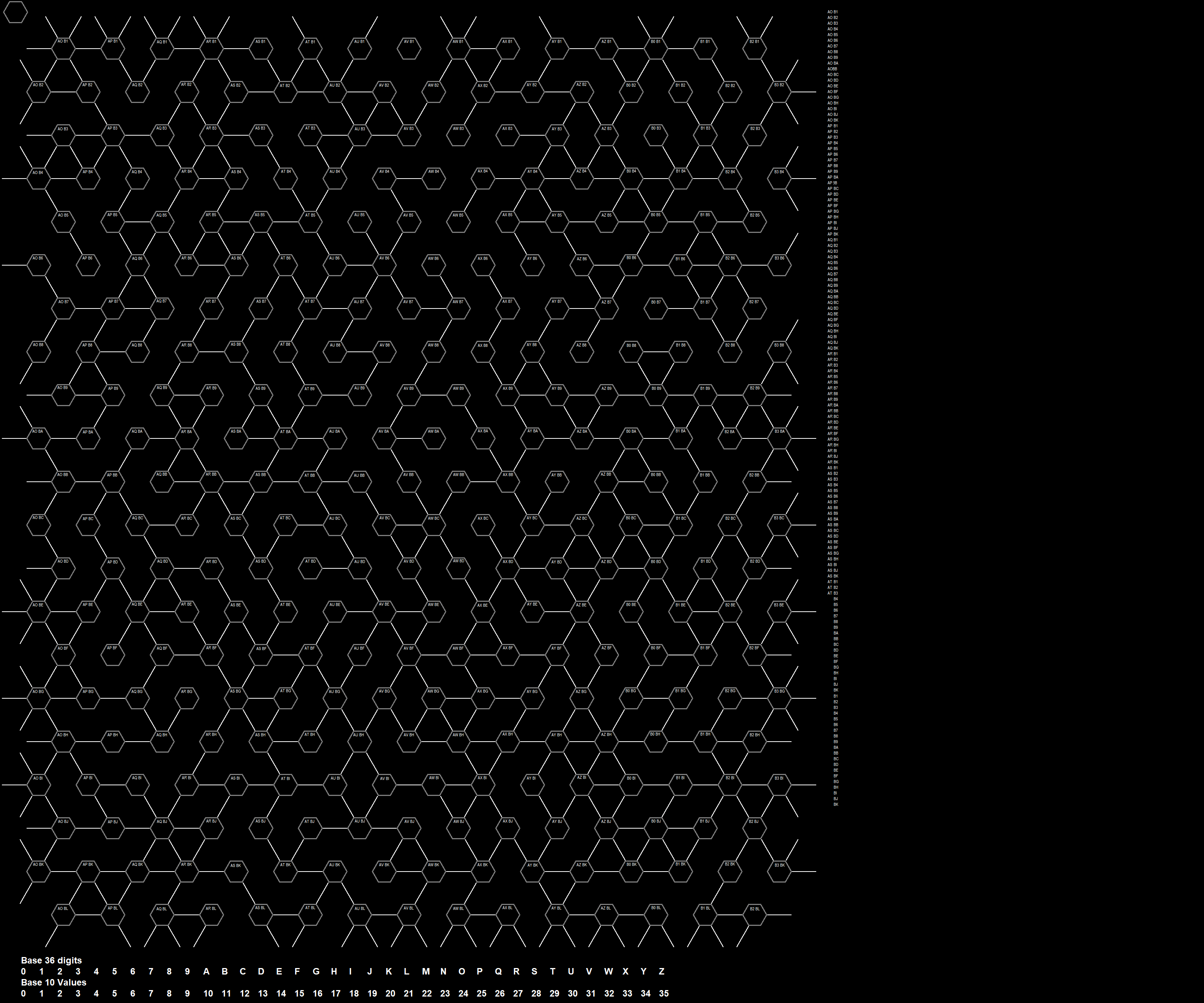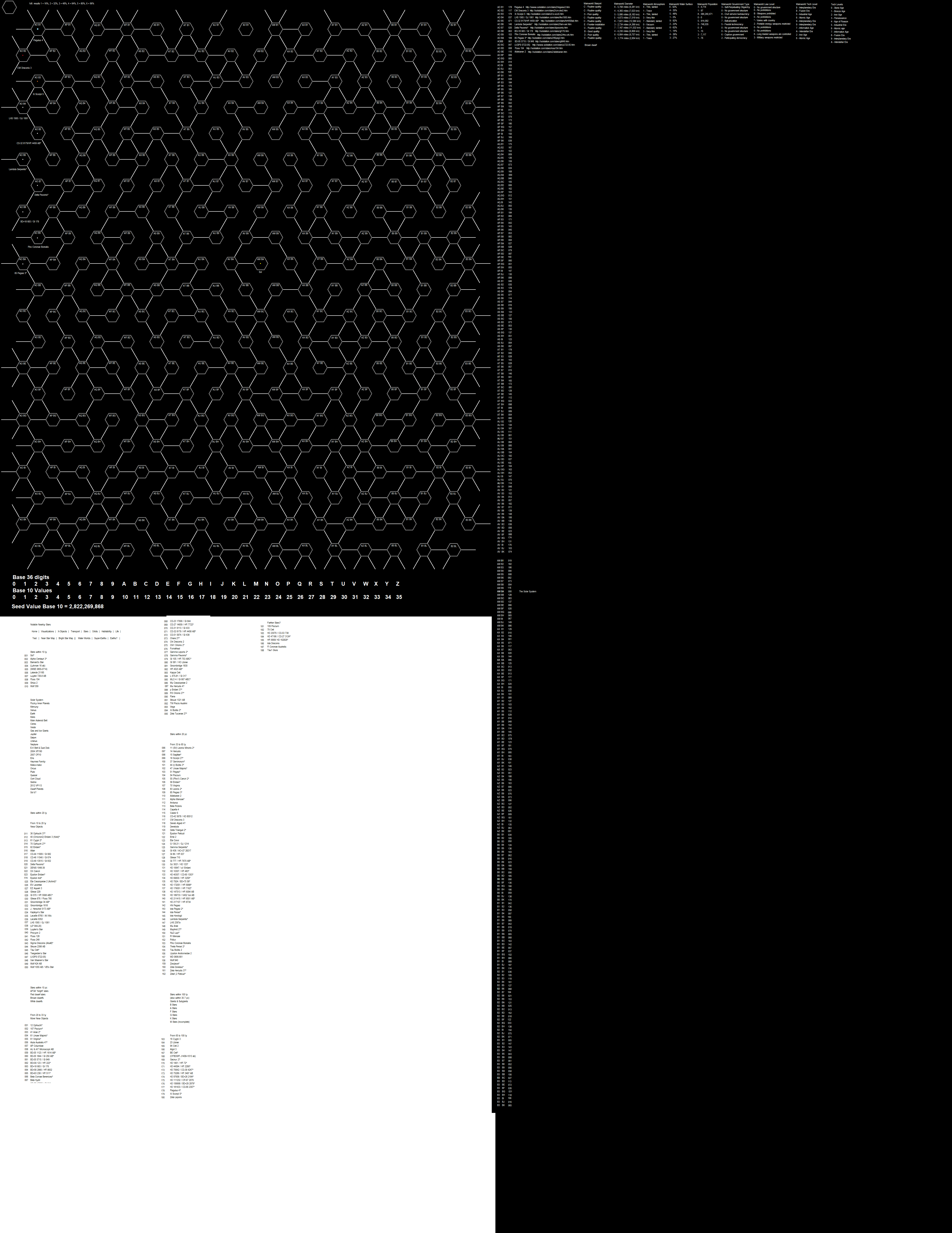Thomas Bowman
First Post
This map is for a home brew variant of Traveller rpg, any edition, alternatively it could be adapted to any space opera RPG. the nub is, this setting uses wormholes, also called stargates instead of an FTL drive, such as the hyperdrive, the Jump Drive, Warp Drive or whatever.
Wormholes have certain features,
1) they don't travel with what they transport
2) each wormhole has two ends or mouths
3) this type doesn't require a stellar mass or anything approaching the mass of a star.
4) this type doesn't have an event horizon and is two-way
5) you can see through a wormhole, light and other stuff does pass through
6) it takes a finite amount of time to pass through a wormhole, and such passage is not instantaneous
7) in its natural form, its mouths are spherical, but an artificial wormhole has a number of flat faces, such as on a dodecahedron which allows passage through without undue tidal effects.
8) Wormholes have the mass of at least a medium-sized asteroid, a few tens of kilometers wide, but the but the throat of such wormholes is a few hundred meters in diameter, so a spaceship has to be skinnier than the throat of a wormhole so as not to be torn apart while in passage.
9) Another problem is that wormholes will decay if not maintained, and passage of objects through a wormhole that are more massive than the wormhole will cause an explosion as the mass of the wormhole will convert to energy, this is the reason these wormholes aren't found on the surface of a planet, not that they couldn't be maintained there, but if containment fails, the wormhole will fall into the planet's surface and ingest an amount of matter greater than its mass and then explode causing an extinction level event on the planets surface, and this is generally not desired, so wormholes are based in space. Each system in my map has up to 6 wormholes leading to other places, generally they are kept in the outer star system, to minimize the hazard to populated areas should a wormhole explode.
The lines shown connecting the hexes indicate which wormholes lead to which other systems, The hexes contain the information on each system, this map is blank as I have not added systems to it yet. There is a sidebar to the right where I plan to add additional information on each system which will not fit in each hex. Also the positions of these hexes on the map indicate these hexes relationships to each other through wormholes only, they do not indicate their actual positions in space, and they could be in 3 dimensional space rather than the standard Traveller 2-d flat maps, this is one of the advantages of using wormholes rather than FTL drives.
Without further ado, here is my map:
This can also be found at: https://orig00.deviantart.net/0983/f/2018/108/9/5/my_wormhole_map_by_thomasbowman767-dc96gh9.png

Wormholes have certain features,
1) they don't travel with what they transport
2) each wormhole has two ends or mouths
3) this type doesn't require a stellar mass or anything approaching the mass of a star.
4) this type doesn't have an event horizon and is two-way
5) you can see through a wormhole, light and other stuff does pass through
6) it takes a finite amount of time to pass through a wormhole, and such passage is not instantaneous
7) in its natural form, its mouths are spherical, but an artificial wormhole has a number of flat faces, such as on a dodecahedron which allows passage through without undue tidal effects.
8) Wormholes have the mass of at least a medium-sized asteroid, a few tens of kilometers wide, but the but the throat of such wormholes is a few hundred meters in diameter, so a spaceship has to be skinnier than the throat of a wormhole so as not to be torn apart while in passage.
9) Another problem is that wormholes will decay if not maintained, and passage of objects through a wormhole that are more massive than the wormhole will cause an explosion as the mass of the wormhole will convert to energy, this is the reason these wormholes aren't found on the surface of a planet, not that they couldn't be maintained there, but if containment fails, the wormhole will fall into the planet's surface and ingest an amount of matter greater than its mass and then explode causing an extinction level event on the planets surface, and this is generally not desired, so wormholes are based in space. Each system in my map has up to 6 wormholes leading to other places, generally they are kept in the outer star system, to minimize the hazard to populated areas should a wormhole explode.
The lines shown connecting the hexes indicate which wormholes lead to which other systems, The hexes contain the information on each system, this map is blank as I have not added systems to it yet. There is a sidebar to the right where I plan to add additional information on each system which will not fit in each hex. Also the positions of these hexes on the map indicate these hexes relationships to each other through wormholes only, they do not indicate their actual positions in space, and they could be in 3 dimensional space rather than the standard Traveller 2-d flat maps, this is one of the advantages of using wormholes rather than FTL drives.
Without further ado, here is my map:
This can also be found at: https://orig00.deviantart.net/0983/f/2018/108/9/5/my_wormhole_map_by_thomasbowman767-dc96gh9.png

Last edited:

